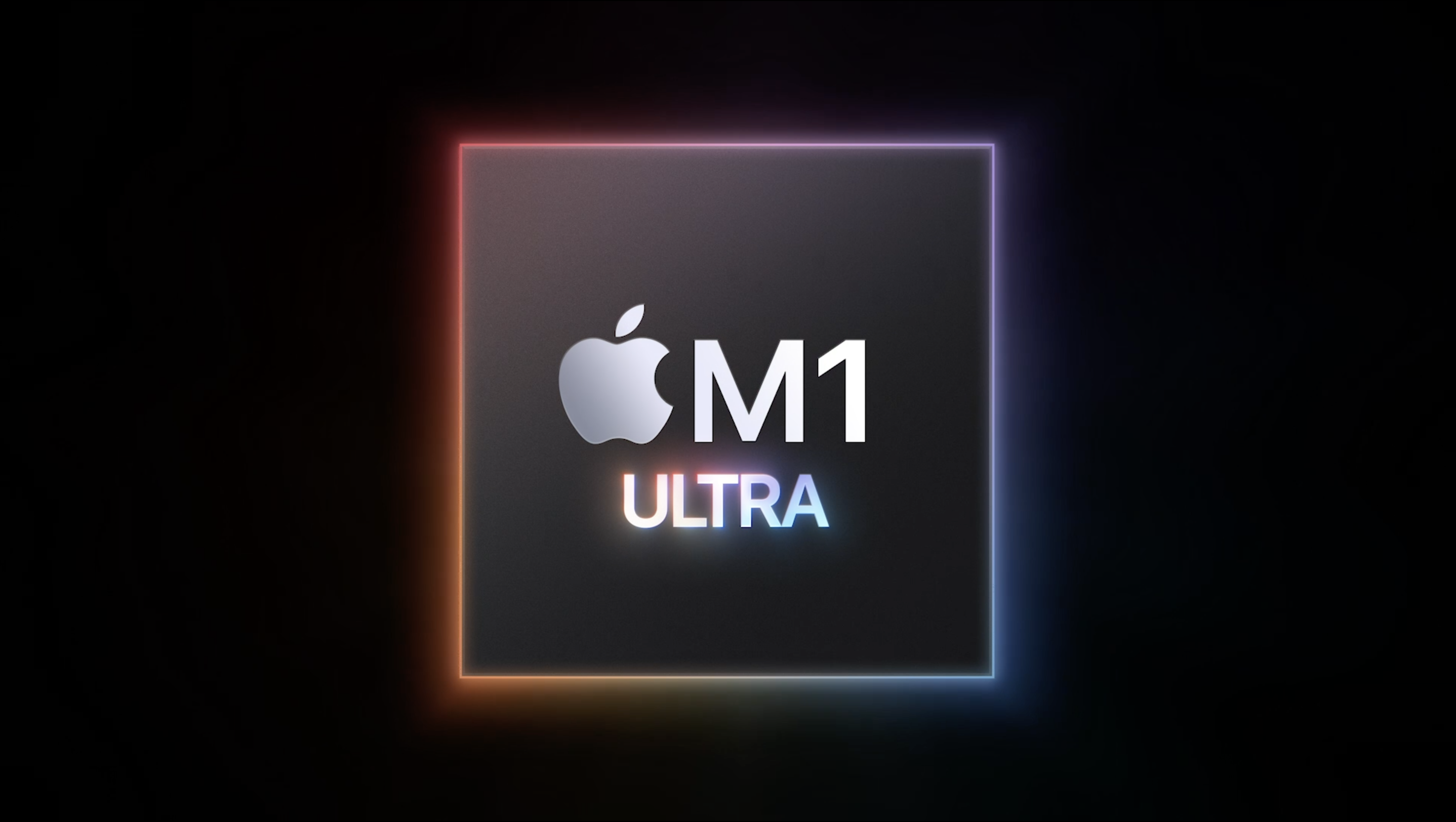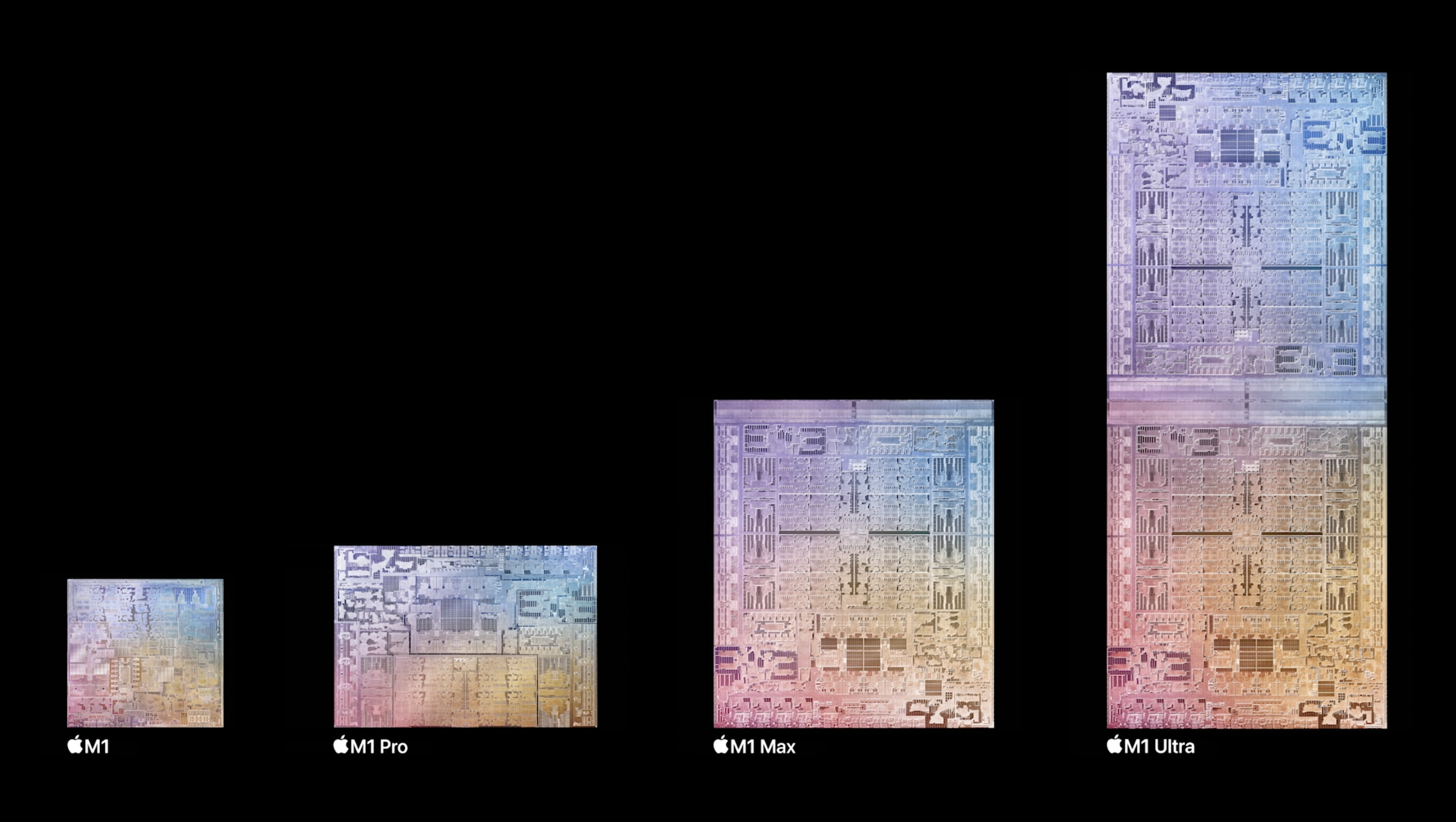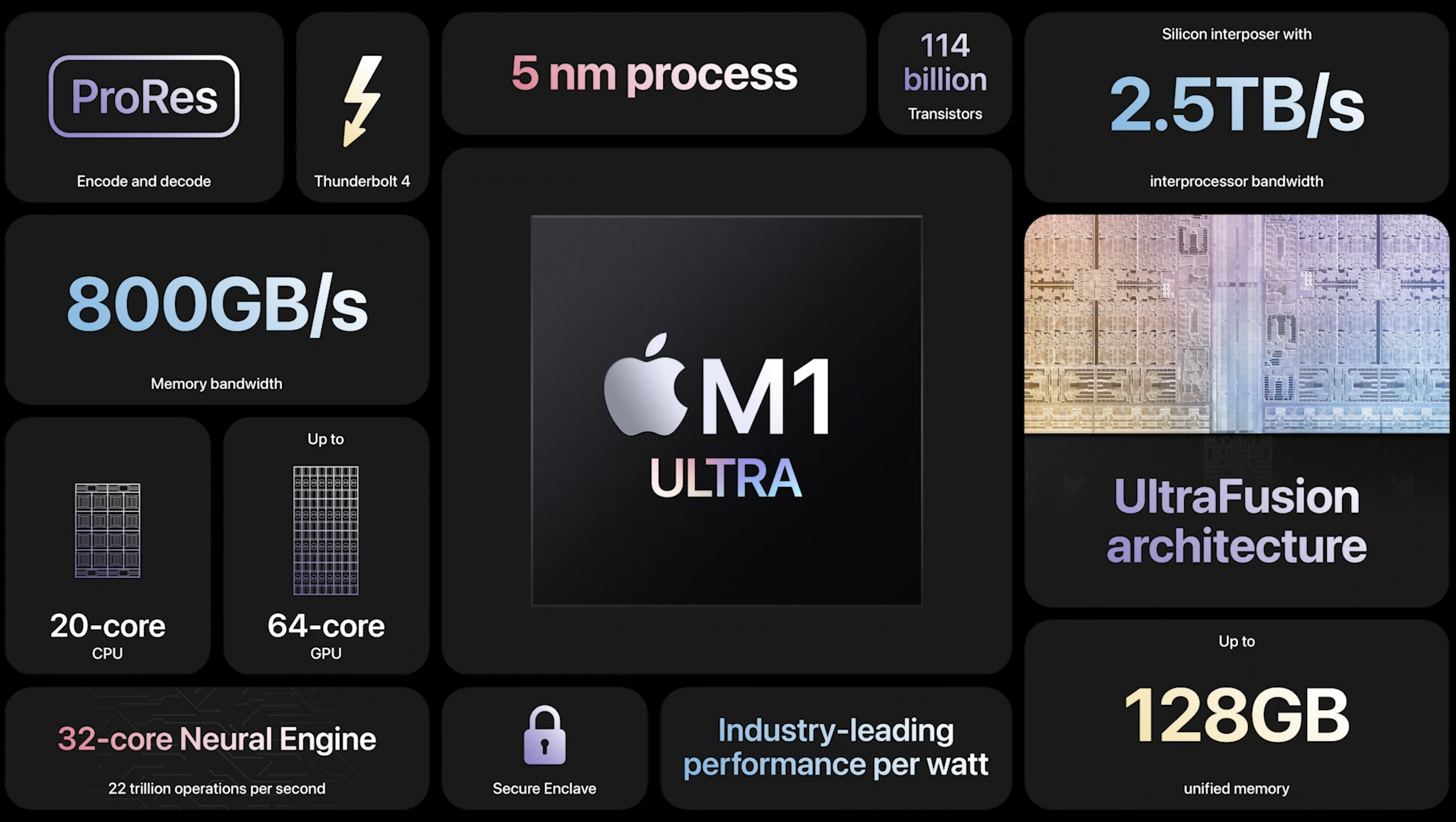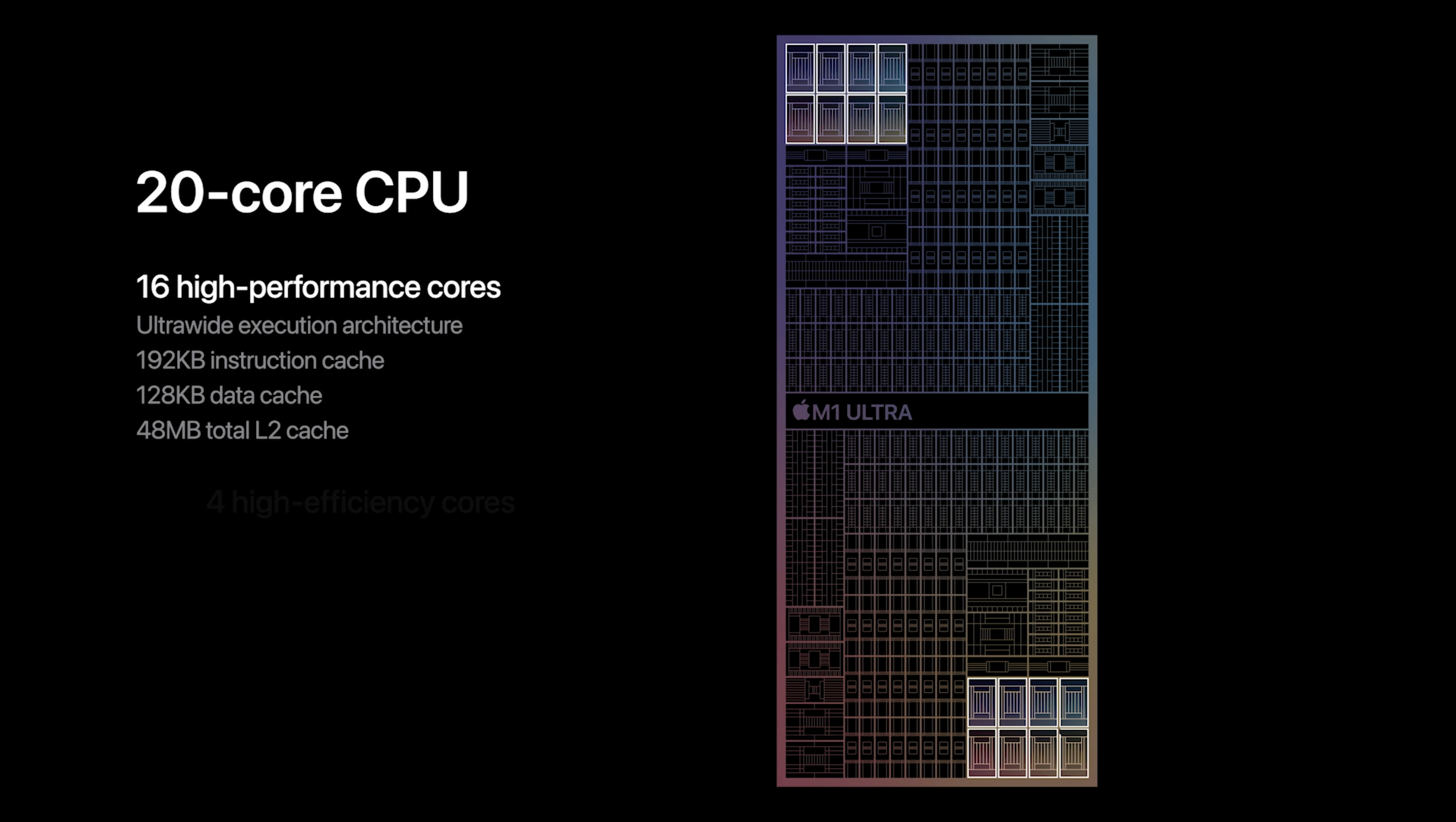Apple M1 Ultra — everything we know so far
This is the most powerful piece of Apple silicon yet

The Apple M1 Ultra is Apple's latest piece of bespoke silicon, and it's the most powerful M1 chip the company has ever made.
Unveiled during the March 2022 Apple Event, the M1 Ultra is an incredibly powerful SoC (system-on-chip). It's basically two M1 Max chips paired together, using a heretofore "hidden feature" of the Max: special die-to-die interconnection tech that lets two Max chips work together for all-new heights of power. Given that the first Apple M1 Ultra benchmarks show off awesome power, we're inclined to believe.
Apple calls this interconnection technology "UltraFusion", and it appears to be enabling Apple silicon to reach unprecedented levels of performance. It will debut March 2022 in the Apple Mac Studio, a Mac desktop that bridges the gap between the Mac Pro and mini.
Here's what we know so far about the Apple M1 Ultra, Apple's most powerful chip yet.
Apple M1 Ultra: Top upgrades
- 20-core CPU and 64-core GPU, the most ever on an Apple chip
- 114 billion transistors, over 7x more than on M1
- Supports up to 128GB unified memory (RAM)
- 32-core Neural Engine
- Apple claims M1 Ultra delivers faster performance than the highest-end discrete GPUs (like the Nvidia GeForce RTX 3090) while using up to 200W less power.
- For video pros, Apple claims the Ultra can manage up to 14 ProRes streams simultaneously
Apple M1 Ultra: Price and release date
The M1 Ultra is expected to debut in the new Mac Studio, Apple's latest high-end desktop.

Though the desktop starts at $1,999, to get one with the M1 Ultra chip will require to pay at least $3,999. You can pre-order them now via Apple's website, and they'll begin shipping March 18.
Apple M1 Ultra: Specs
Like the other Apple M1 chips, the M1 Ultra integrates the CPU and GPU together and lets them draw from the same pool of unified RAM memory, which results in higher efficiency and decreased latency. According to Apple, the M1 Ultra is formed by physically connecting two M1 Max chips together using a heretofore "hidden feature" on the M1 Max -- a silicon interposer capable of achieving up to 2.5TB/s interprocessor bandwidth.
Sign up to get the BEST of Tom's Guide direct to your inbox.
Get instant access to breaking news, the hottest reviews, great deals and helpful tips.

What that means, in simple terms, is that the M1 Ultra is effectively two M1 Max chips stuck together and sharing up to 128GB of memory.
The M1 Ultra has 114 billion transistors (double the 57 billion on the M1 Max) and a 20-core CPU with 16 performance cores and 4 efficiency cores. As mentioned it can access up to a 128GB shared pool of memory with a memory bandwidth of up to 800 GB/second.

It also has a 64-core GPU, which is an incredible amount of graphical processing power for a chip like this -- it's nearly 8x as powerful as the original M1 chip. Plus, it has a 32-core Neural Engine for even better image processing, machine learning and more.
Apple M1 Ultra: Outlook
We were expecting to see an all-new M2 chip unveiled early in 2022, not a new top-end M1 chip like the Ultra, but you won't catch me complaining; given that the M1 Max blew my expectations out of the water in 2021, the prospect of a new chip that's effectively twice as powerful is very exciting.
Of course, we'll have to wait until we get hardware in for testing and review before we can really say how this new high-end piece of Apple silicon helps the Mac Studio compete with the best computers on the market.

Alex Wawro is a lifelong tech and games enthusiast with more than a decade of experience covering both for outlets like Game Developer, Black Hat, and PC World magazine. A lifelong PC builder, he currently serves as a senior editor at Tom's Guide covering all things computing, from laptops and desktops to keyboards and mice.
